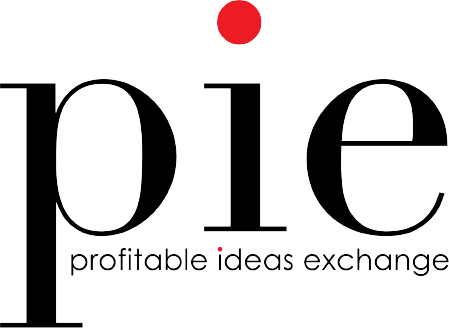Most professional services organizations understand the importance of business development (BD), but few create a BD culture that masters and executes it amidst their day-to-day deliverables. So, what makes the difference?
Every quarter, PIE hosts a group of growth and marketing leaders in professional services to connect around the questions keeping them up at night, the challenges in the industry, and the opportunities to become even better. During our most recent roundtable in Chicago, we gathered at a small café clearly marketed for business lunches, complete with a plethora of high-tops, soft jazz, a menu comprised of salads and light sandwiches, and suits as far as the eye could see. The topic du jour? How to create an integrated sales and marketing function that drives a culture of business development.
Within the first 10 minutes, the grumblings started.
“I just can’t get my team to follow-up.”
“No one knows how to sell. The idea of networking makes people groan.”
“Our teams are like oil and water, no one collaborates or cross-sells.”
The salads hadn’t even been served and yet the nods of agreement around shared frustration distracted most from their grumbling bellies.
Business development (BD) is the process of identifying, pursuing, and winning new opportunities for your firm. While most professional services organizations know the importance of prioritizing BD, it often takes a backseat to more urgent client work and deliverables. Additionally, many professional services firms rely on a few rainmakers to drive business and fail to cultivate the skillsets necessary to help transform their best deliverers into their best sellers. Below, we explore some of the most common challenges facing professional services when it comes to business development, and how they overcome those challenges by cultivating a BD culture.
The Challenges
If there’s one thing that everyone at the growth table agreed on, it’s that selling professional services is hard. One of the key challenges professional services firms face when it comes to BD is the fact that their offerings are customized, knowledge-based, and consequently, intangible. This means professional services firms must rely on first establishing expertise and building trust before they can win new work. This leads to long and uncertain sales cycles, reliance on strong relationships and a robust network, and the need for constant follow-up (a big ask in a busy professional services firm).
Additionally, because many large firms are siloed, sales teams often struggle to align and engage across practices. In siloed environments, different practice areas are often competing for resources and recognition, which creates additional challenges as team members are less motivated to cross-sell or provide referrals across the organization.
Finally, many firms operate under a bisected BD model where there are a few senior rainmakers who sell new work while most of their team is focused on delivering the work. While this model can work well for a short period of time, it presents long-term risk for the firm as senior rainmakers will inevitably retire or move on from the organization, leaving behind a team of junior partners that have never been mentored or developed the skillsets necessary for becoming the next generation of champions. This bisected model creates a skills gap. Delivery teams, who are the closest to new work with existing clients, fail to consistently identify and win new opportunities for growth.
Tactical Strategies for Creating a BD Culture
One of the most effective ways to drive growth in your organization is to cultivate a bottom-up BD culture. By taking a grassroots approach to business development within your firm, you empower your best deliverers to build the skills necessary to be the next generation of dealmakers and equip them to identify new opportunities and empower them with the skills to sell to those who already know, like, and trust your organization. By building structures in which your junior BD leaders can learn from your best sellers, you ensure that the skills, knowledge, and best practices of your BD leaders are carried into the future of your organization.
The foundation for a strong BD culture is a clear vision—a shared set of values, beliefs, and behaviors around who you serve, what you do for them, and why. Below are some of the strategies we have seen the most mature professional services organizations deploy to create and embed a BD culture:
- Sidewalk coaching: A type of informal, on-the-spot coaching that involves debriefing and providing feedback to a colleague immediately following a meeting. An example of sidewalk coaching would be a senior partner providing immediate feedback to a junior partner who joined them for a sales meeting, covering what went well and what can be improved.
- Account planning: Account planning, while not a new process, can be a great opportunity to train junior employees in best practices for cultivating new relationships and identifying areas in which you may be able to expand your remit with a client. Bringing a junior employee into the strategic account planning process will help them learn the language of BD, understand the nuances with relationship development, and empower them to think strategically within their own accounts.
- Shadowing: A form of experiential learning, shadowing can be an effective way to provide junior employees the opportunity to observe and ask questions about the sales process. Senior leaders can bring up-and-coming BD leaders into their prospecting, networking, and negotiating activities, and, most importantly, debrief with them following each activity to ensure questions are answered and key insights are gained.
- Training: Both internally led and externally sourced BD training is critical to developing the skillsets necessary for long-term growth. Firms at every size and level of maturity lean on training to sharpen and level up skills for the most junior associates to the senior rainmakers. Carving out dedicated time for role-play, case studies, scenario planning, and alignment around best practices ensures BD skills continue to develop and improve across your firm. External training partners can insert new ideas and energy into a sales team, especially when paired with internal accountability around best practices and expectations for growth.
- Incentive structures: Most people want to be recognized for their efforts, so having incentive programs in place that align with your growth goals is an effective way to hold your teams accountable.
If you’d like to learn more about bespoke BD workshops or best-in-class BD for professional services, please reach out!


